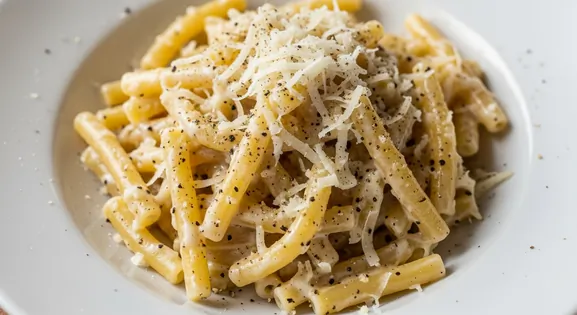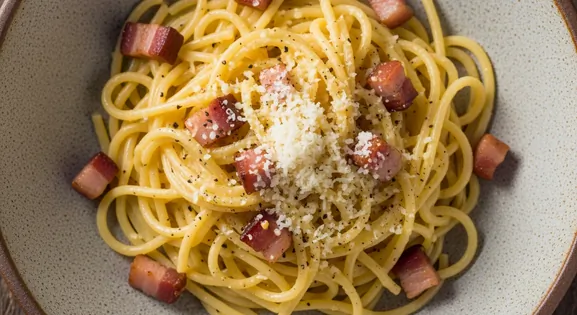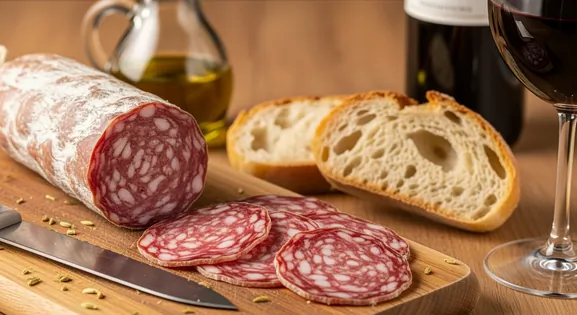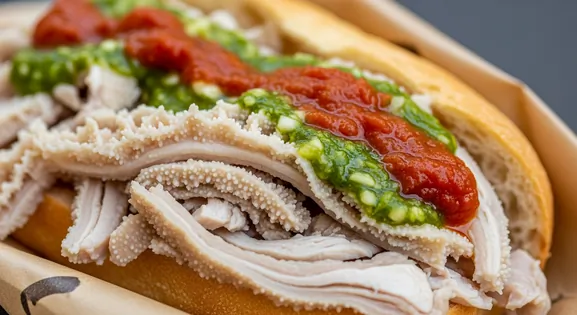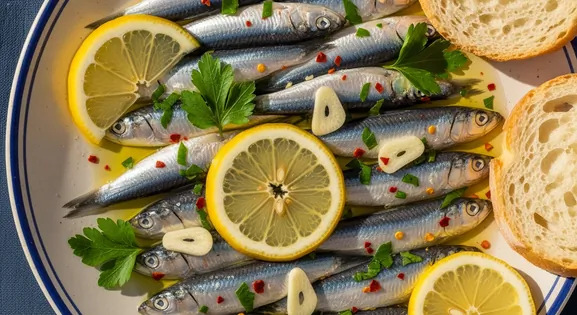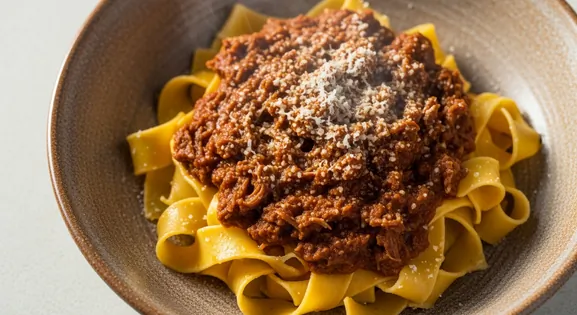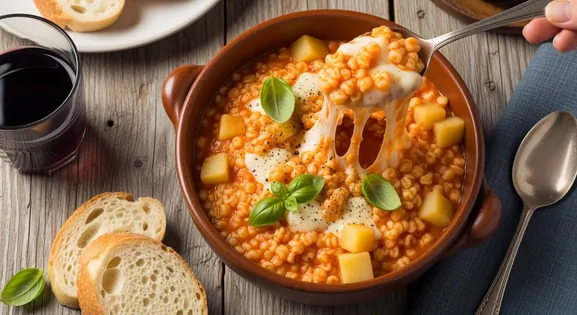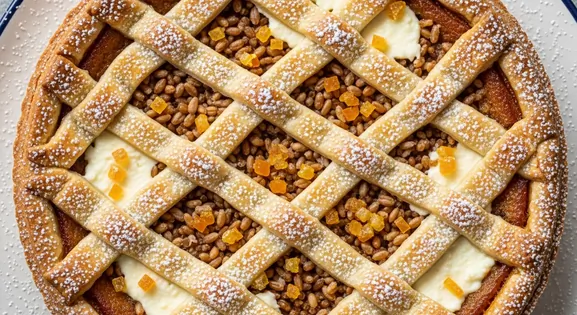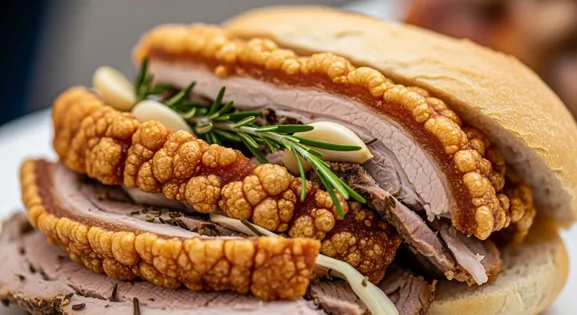Schiacciata con l'uva in Italy: A Complete Food Lover's Guide to this Seasonal Tuscan Delicacy, its History, and How to Enjoy it Authentically
Schiacciata con l'uva
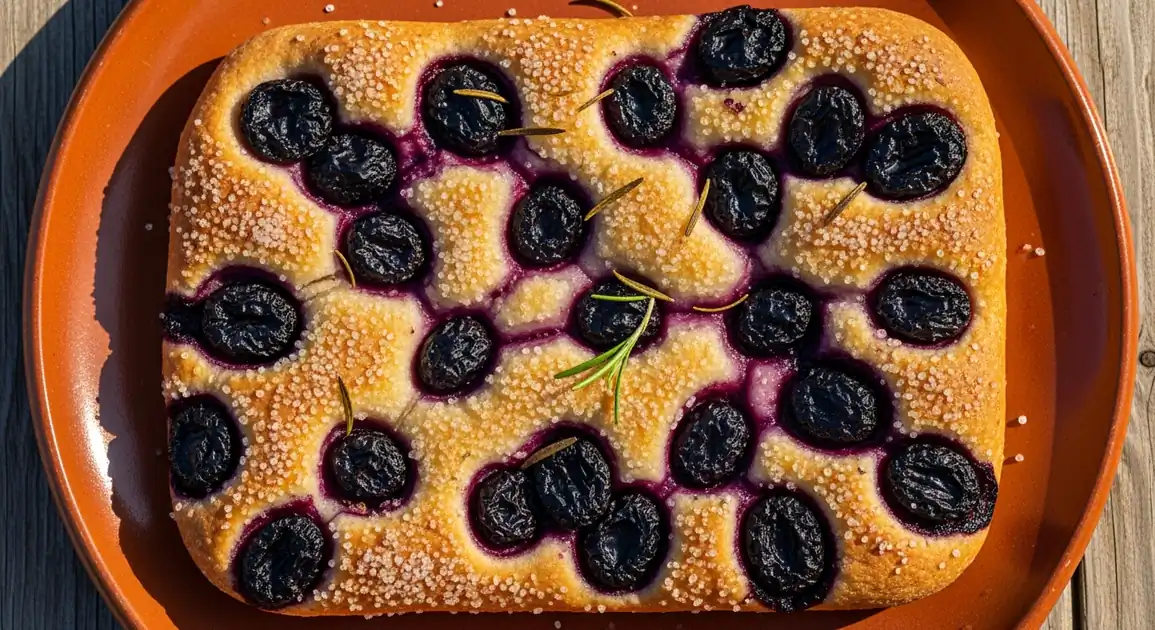
What is Schiacciata con l'uva (Grape Flatbread)?
Schiacciata con l'uva is a seasonal Tuscan delicacy that celebrates the grape harvest, featuring wine grapes pressed between layers of olive oil-enriched dough, sprinkled with sugar and sometimes rosemary or anise. This rustic flatbread straddles the line between bread and dessert, offering a unique sweet-savory flavor profile. The hints of fermentation from the grapes, which bleed their juices into the dough during baking, create a distinct moistness and a beautiful purple-red marbling, making it a truly unique autumnal treat.
The Art of Preparation
Traditional preparation begins with a focaccia-like dough enriched with olive oil. The dough is divided, with one portion flattened as the base, covered with black wine grapes (typically Canaiolo), sugar, and sometimes olive oil, rosemary, or anise. The second portion of dough is stretched over the top, more grapes are pressed into the surface, and everything is sprinkled with additional sugar. During baking, the grape juices seep into the dough, creating distinctive purple-red staining throughout. The sugar caramelizes, forming a glistening, crisp top crust while the interior remains moist from the grape juice.
Key Ingredients of Schiacciata con l'uva (Grape Flatbread)
Wine Grapes (Uva da Vino)
Specifically black wine grapes like Canaiolo, these are smaller, often seeded, and possess a more intense, tannic flavor than table grapes. Their juice is crucial for the bread's unique color and moist texture.
Quality indicator: Look for plump, dark grapes that are slightly soft to the touch, indicating ripeness and juiciness.
Olive Oil (Olio d'Oliva)
A generous amount of high-quality extra virgin olive oil is incorporated into the dough, giving it a rich, tender crumb and contributing to the flatbread's characteristic aroma and flavor.
Quality indicator: Choose schiacciata with a subtle, fruity olive oil aroma, not a greasy or heavy scent.
Bread Dough (Pasta di Pane)
A simple, focaccia-like dough made from flour, water, yeast, and olive oil forms the base. It should be light and airy, allowing the grape juices to permeate during baking.
Quality indicator: The dough should appear well-risen and have a slightly irregular, rustic texture, not dense or uniform.
What to Serve with This Dish
Vin Santo
Sweet Dessert Wine
This traditional Tuscan dessert wine, often amber-hued and intensely flavored, complements the sweetness and fruitiness of the grapes in the schiacciata, creating a classic regional pairing.
Pecorino Fresco
Soft Cheese
A young, mild Pecorino cheese offers a subtle saltiness and creamy texture that beautifully contrasts the sweet and slightly tart notes of the grape flatbread, creating a balanced snack.
The Culinary Legend of Schiacciata con l'uva (Grape Flatbread)
This traditional flatbread dates back to the Etruscan era and is deeply connected to Tuscany's wine culture. Historically prepared during vendemmia (grape harvest) in September-October, it was a practical way to use excess wine grapes while celebrating the harvest season. The name 'schiacciata' (meaning 'squashed' or 'flattened') refers both to the flattened dough and the pressed grapes. While originally a rural specialty, it became a beloved seasonal staple throughout Florence and Tuscany, representing agricultural traditions and seasonal eating patterns.
Local Schiacciata con l'uva (Grape Flatbread) Variations in Italy
Traditional Schiacciata con l'uva
The classic version with black wine grapes, sugar, and olive oil. Sometimes includes a subtle hint of rosemary or anise seeds.
Anise-flavored Schiacciata
Includes anise seeds in the dough or sprinkled on top, adding a distinctive licorice note that pairs well with the grape flavor.
Rosemary Schiacciata con l'uva
Features fresh rosemary sprinkled among the grapes, enhancing the savory quality and creating a more complex flavor profile.
Walnut and Grape Schiacciata
A variation that includes chopped walnuts for added texture and nutty flavor, particularly common in some rural Tuscan areas.
A Traveler's Guide to Authenticity
What to Look For
-
Made with wine grapes, not table grapes
Authentic schiacciata con l'uva uses wine grapes (smaller, with seeds) which have the proper flavor profile and juice content. Table grapes create an inferior product.
-
Vibrant grape juice staining throughout the bread
Good schiacciata should show purple-red marbling where grape juice has infused the dough, indicating proper preparation and fresh grapes.
-
Baked same-day
This specialty deteriorates quickly - ask when it was baked ('Quando è stata sfornata?'). Best quality is within hours of baking.
-
Stored at room temperature, not refrigerated
Proper storage maintains texture. Refrigeration harms the consistency of the bread and dulls flavors.
What to avoid
-
Pre-packaged versions with extended shelf life
These contain preservatives and miss the ephemeral quality of fresh-baked schiacciata con l'uva.
-
Overly dry appearance or texture
Indicates the schiacciata is old. The interior should remain somewhat moist from grape juices.
-
Bright purple artificial coloring
Natural grape juice staining has a more muted purple-red hue. Vibrant purple may indicate artificial coloring.
-
No visible grape skins or evidence of real grapes
Authentic versions must contain actual grapes, not just flavoring or jam.
Explore Schiacciata con l'uva (Grape Flatbread) in Detail: City Guides
Discover where to find the best Schiacciata con l'uva (Grape Flatbread) and learn local tips in these cities:
Dietary Information
Dietary Information
Important Note for Travelers: Your safety is our priority. Below are the common allergens associated with the traditional preparation of this dish. However, recipes and ingredients can vary significantly between establishments. Always confirm all ingredients directly with the food vendor before ordering, especially if you have a severe allergy.
Potential Allergens
Dietary Suitability
How to Order Schiacciata con l'uva (Grape Flatbread)
Frequently Asked Questions about Schiacciata con l'uva (Grape Flatbread)
What is Schiacciata con l'uva?
Schiacciata con l'uva is a seasonal Tuscan grape flatbread made during wine grape harvest season (September-October). It features sweet wine grapes pressed ('schiacciata' means 'squashed') between two layers of olive oil-enriched dough, then topped with more grapes, sugar, and sometimes rosemary or anise seeds. When baked, the grape juice seeps into the dough creating a unique sweet-savory flavor profile with a hint of wine-like fermentation.
Is Schiacciata con l'uva dessert or bread?
Schiacciata con l'uva occupies a delicious middle ground between bread and dessert. While built on a bread dough base similar to focaccia, the addition of wine grapes and sugar transforms it into a sweet treat. Tuscan tradition considers it a merenda (snack) rather than a proper dessert. It's less sweet than typical cakes but sweeter than regular bread. Some locals enjoy it with cheese or as an accompaniment to wine.
When can I find Schiacciata con l'uva in Italy?
Schiacciata con l'uva is a strictly seasonal specialty available primarily during the grape harvest season (vendemmia), typically from early September through October across Italy. This timing coincides with when wine grapes like Canaiolo are harvested. For the most authentic experience, seek it out during this peak freshness period.
How do I know if Schiacciata con l'uva is fresh?
Fresh Schiacciata con l'uva should have a golden-brown, slightly crisp exterior with visible purple-red grape juice stains in the dough. The grapes should appear plump, and the bread should feel moist but not soggy. Always ask when it was baked ('Quando è stata sfornata?'). This treat is best enjoyed within a few hours of baking, as day-old versions quickly lose their ideal texture.
What kind of grapes are used in authentic Schiacciata con l'uva?
Traditional Schiacciata con l'uva uses black wine grapes, such as Canaiolo, which are smaller, thick-skinned, and intensely flavored. These grapes provide the distinctive tannic and slightly acidic balance to the sweetness. Authentic versions never use common table grapes, as wine grapes are crucial for the unique flavor profile. Seeds are typically left in during baking.
Is Schiacciata con l'uva vegetarian or vegan?
Schiacciata con l'uva is almost always vegetarian, but traditional recipes often include milk, eggs, butter, or lard, making it rarely vegan. While some modern bakeries offer vegan versions, they are not traditional. If you have dietary restrictions, always ask about ingredients ('Contiene latte/uova/burro/strutto?'), as recipes vary by baker.
Expert How-To Guides about Schiacciata con l'uva (Grape Flatbread)
How to Spot Authentic Schiacciata con l'uva
Find truly authentic and delicious grape schiacciata using these indicators of quality.
- Choose traditional bakeries ('forni artigianali') that prioritize local ingredients and traditional methods. Look for signs of genuine craftsmanship.
- Verify it's made with wine grapes ('uva da vino') not table grapes - the grapes should be small with seeds, not seedless varieties.
- Look for visible grape juice stains in the dough - good schiacciata has purple-red marbling where juice has soaked in.
- Check for freshness - the top should be slightly crisp and sugary, while the center remains moist.
- Great schiacciata balances sweet and savory - there should be a hint of olive oil flavor and possibly rosemary or anise.
- Ask when it was baked - this treat is best eaten the same day it's made.
How to Enjoy Schiacciata con l'uva Authentically
Experience this seasonal treat the way Italians do with these cultural eating tips.
- Eat it fresh - this treat is best enjoyed the same day it's baked, ideally still slightly warm.
- Enjoy as a standalone merenda (afternoon snack) around 4-5 PM - the traditional time for this treat.
- Pair with Vin Santo (sweet dessert wine) for an authentic experience - the wine complements the grape flavors.
- Don't be surprised by grape seeds - traditional versions keep the seeds in, and locals either eat them or discreetly remove them.
- Try both end and center pieces - the edges are crispier while the center has more juice-infused softness.
- Consider balancing with savory foods - it pairs well with mild cheeses like pecorino fresco.
Our Commitment to Quality
At Tasteplorers, our mission is to provide the most accurate and useful travel information in the world. To achieve this, all content on this site is created through our unique editorial framework. We utilize leading AI research tools, guided by our proprietary prompts, and a multi-stage validation process. This entire system is overseen by our editorial team to ensure everything we publish meets our high standards for accuracy, cultural nuance, and practical value for travelers.
Learn more about our Editorial Process and our Mission.
Countries
Explore regions
Europe
Discover Europe's diverse culinary landscape, from Mediterranean flavors to hearty Alpine fare. Learn to navigate markets, decode menus, and eat like a local.
Latin America & Caribbean
Discover the vibrant cuisines of Latin America & the Caribbean. Our expert guide covers everything from Mexican street food to Peruvian ceviche and market tips.
Oceania
Explore Oceania's diverse food scene. Learn about Polynesian earth ovens, Fijian feasts, and the vibrant café culture of Australia and New Zealand.
Southeast Asia
Explore Southeast Asia's diverse food cultures from Thailand to Vietnam. Get expert tips on navigating spice levels, choosing quality vendors, and understanding the rich traditions of the region.
